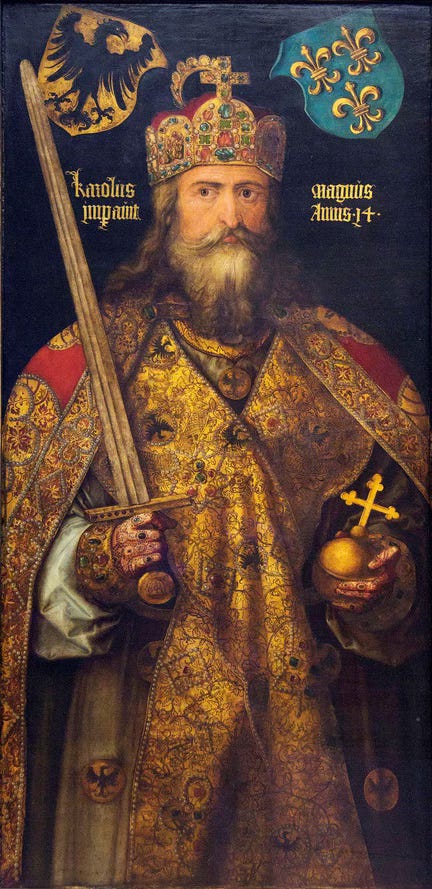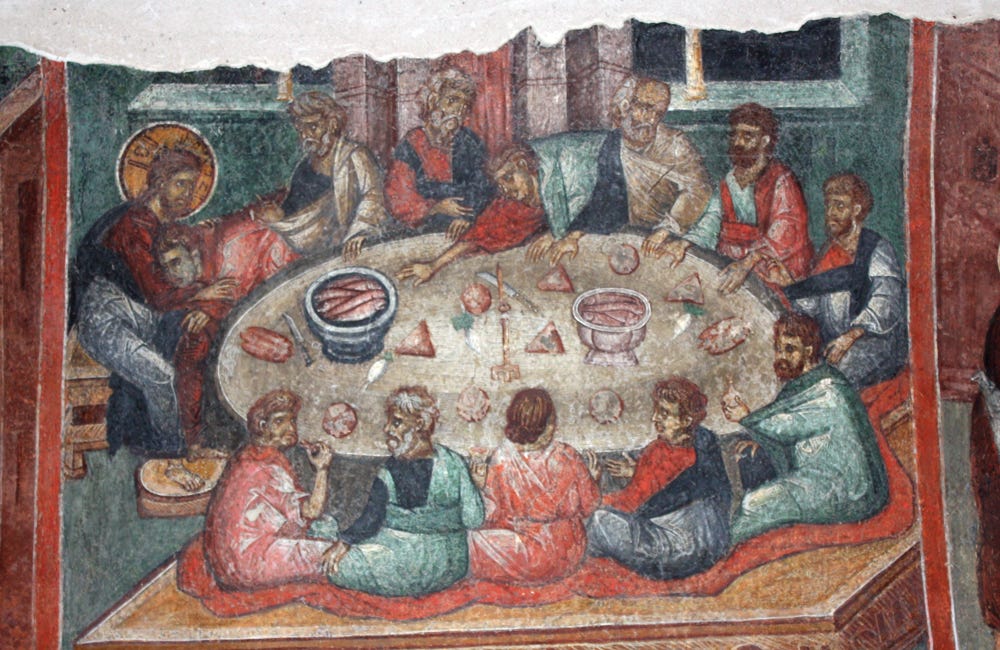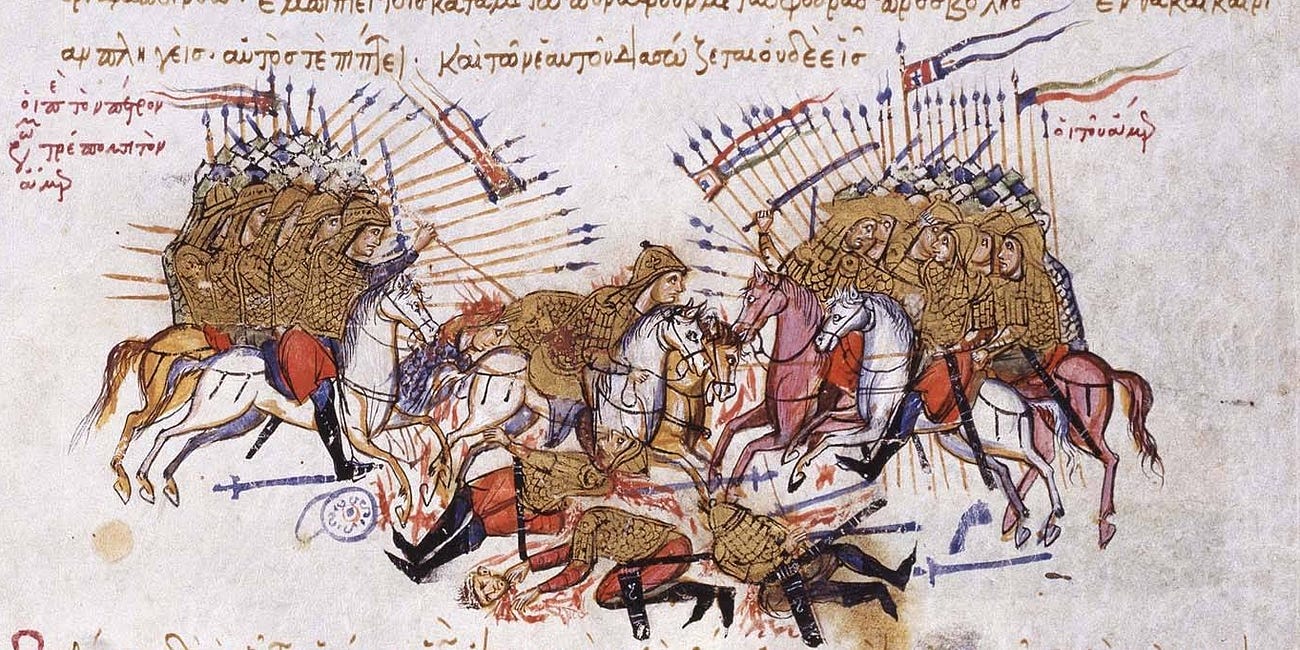How Europe became Christian
Review of The Conversion of Europe: From Paganism to Christianity, 371-1386 AD by Richard A. Fletcher
During the last 2000 years, perhaps the most fundamental transformation in Europe was the conversion of pagans into Christians. This subject fascinates me and I have been seeking a full explanation since my days as a classics civ major. To put it mildly, explanations are legion, ranging from the purely theological to psychological and sociological removes. So far, none of them seem satisfactory to me.
Fletcher’s book takes a sociological approach, grounded in historical examples as proof. He starts by asking, who Christianity was for? This was essentially a question of whether Christianity was for the Roman Empire alone – guarded and promoted as a strictly internal and unifying creed – or whether it was also the business of the state and its evangelists to attempt to spread its doctrines everywhere as missionary preachers. The former was the initial view of the patriarchs in Constantinople, who would later found the Greek Orthodox Church, while the latter was that of the west, as argued by Augustine, the most important Catholic theologian of his time. Notably, the eastern position represented an ideological consolidation of the state – us versus those outside their borders. Shades of totalitarianism. Eventually, the Augustinian view won out, but Christianity remained a potent instrument of political power.
In the very beginning, Christianity was largely an elite, urban phenomenon, in particular promoted by influential women in the royal and aristocratic courts. The conversion of Constantine in 312 CE was an example of this: his mother was Christian and had long worked to convince him to adopt the new faith. His conversion was personal, providing official permission for those who wished to convert; it essentially ended the periodic discrimination against Christians, but conversion was by no means mandatory. It was only with the imperial ascension of Theodosius in 379 that Christianity became the official religion of the Roman Empire. Interestingly, Fletcher does not emphasize that Constantine’s conversion, at a difficult moment for the Empire, was also a way to consolidate his political power and legitimacy as the special representative of God on Earth.
At that point, the Augustinian view of evangelism was applied to the rural provinces, which remained overwhelmingly pagan. This took the form of the establishment of institutions, largely with monasteries, throughout the Empire and sometimes even beyond its borders, as in Ireland. Monks served as holy men, who would preach to the pagans in the countryside, provide feasts as well as some literary culture, and officiate over domestic ceremonies and administration. With many aristocrats and notables entering Christian service, these institutions provided a dynamic new venue for elite careers. Crucially, they plowed their wealth into the Church while pagan institutions were defunded by the state and later actively suppressed. Over several generations, they began to work their way into everyday life, largely by habit, rarely by coercion in this early stage. Theologically, Christianity remained relatively fluid in the 4th-6th centuries, with many competing sects, such as the Arians.
Once the western portion of the Empire collapsed, Germanic and other tribes swept into the political vacuum left behind. Many of them, such as Theodoric, had had close association with the eastern portion of the Empire (labelled Byzantium by historians) and considered themselves Christian; however, most were Arian, which was a “heretical” sect that believed Jesus was a “created man”, hence not divine. The Christian barbarians continued to rely on established institutions to administer and hold onto power. As a result, their religion was passed on in the Germanic dialects, that is, Christianity no longer held as a monopoly of the Roman languages, Latin and Greek; this was, Fletcher informs us, a crucial sign of Christianity’s wider acceptance as well as its suitability in terms of propagation.
For the pagan barbarians, conversion tended to follow the pattern of women consorts and courtiers influencing their men to adopt the Christian faith. For example, in 508, Clovis was baptized into Catholic Christianity on the insistence of his wife, Clotilde. He was a warlord who had united the Franks and needed to consolidate his power and authority. Many of his opponents rallied to pagan leaders, which Clovis vigorously suppressed, leaving Christianity triumphant and indeed, his victory indicated that its Godhead was superior to those of the pagans. Of course, this fit into the Christian narrative and was subsequently immortalized by a monk, Gregory. These converts are referred to as the “New Constantines”. For others, the conversion was a sign of their acceptance of, or desire to demonstrate their adherence to, Roman culture.
When Christian warlords began to expand out of their territories, in many cases they attempted to coerce the conversion of pagans, often with mixed results. Under Charlemagne, the Franks made religious conversion of the Saxons one of their priorities in a series of brutal conquests. In other instances, pagans could choose to convert as a way to access wealth, technologies, and organizational expertise – this represented an attraction of wealth and power, perhaps equally powerful to military conquest. Fletcher argues that even during the dark ages, Rome-influenced areas were richer and better organized than their pagan counterparts.
Eventually, Christianity became deeply ensconced in the countryside, viewed as part of the everyday backdrop beyond its official functions and religious roles. The Church’s approach was largely, if loosely, syncretic, absorbing certain local traditions into its rituals and occasionally, pagan beliefs; this led to an extraordinary diversity in how priests conducted themselves – many were married and conducted quirky religious rituals. From about the 6th Century, the Christian Church began to consolidate itself, setting standards for rituals and rules, such as the abandonment of the drinking-horn chalice in England, but it was only several centuries later that the Roman Church attempted to seriously standardize these practices.
In the upheavals that were to follow, the Church was at times the only local authority to survive intact. At the time of the Viking and Islamic invasions, it became an ideological instrument of war. In particular, as he created and consolidated the Holy Roman Empire, Charlemagne employed Christianity as a unifying force and conduit through which to propagate his edicts and orders. Jews and Muslims bore the brunt of this violent period, though many of their communities were allowed to operate intact. In the aftermath of the Crusades, the split between the eastern Greek Orthodox Church and Rome became irreparable.
Firmly established by the 11th Century, the Greek Orthodox Church exerted a strong influence in central and northeastern Europe. While there were many incidents of destructive competition with Rome, increasingly the eastern Church went its own way. An influential monk, Cyril, was instrumental in adapting an alphabet for the evolving Slavic languages. Like the translation of Roman texts into Germanic dialects, the acceptance of the Cyrillic alphabet in Rus had a momentous impact, bringing a version of Greek Orthodox theology (Hesychasm) into the developing Church; it was pessimistic and mystical, a reflection of the deteriorating position of the Byzantine Empire, as it faced pressure from aggressively expansive Turkic Empires. By the end of the 14thCentury, the whole of Europe had been converted.
If there is one crucial thing that is missing in Fletcher’s book, it is an extended examination of the psychological aspects of the conversion process. Indeed, he argues that it is a mistake to search for the subjective experience of the individual, that is, the “born again” transformation that is seen today as integral to evangelical conversion. This assumption regarding the conversion experience, he believes, is attributable to William James, the Harvard philosopher and psychologist of the late 19th Century; in this view, James created a kind of fictional projection that is applicable to very few of the early converts. In reality, Fletcher argues, the conversion experience of rural pagans was in most cases banal, copying what the notables dictated to the lower classes as the proper conduct, particularly during their sponsored feasts. While there was some resistance, Christianity in this view was just the most viable option available, the best way to gain certain privileges that aristocrats could bestow. Instead, Fletcher emphasizes Christianity as a persistent “solvent” of traditional beliefs, eroding and replacing them.
Fletcher defines these solvents as “proximity to, interaction with and movement into a culture which is perceived as enjoying a more advanced civilization (in terms of wealth, technology, order, authority and so forth)”. In other words, outside of outright imposition, converts wanted to join a superior culture. An additional incentive for hitherto pagan princes was to gain control over the advantages on offer, enhancing their power, wealth, and the success of their political mission, presumably the security and prosperity of their subjects. That culture was initially Christian Rome, then the relatively more prosperous and organized medieval states that emerged after the fall of the Empire. (Many scholars would disagree with that assumption: economic historians have argued that there was a deflation of 98% from the 5th Century.)
In my opinion, Fletcher’s sociological perspective offers a partial, and necessary, explanation, but it neglects far too much to be taken as the final word. On the one hand, I wonder, why were many women of the court decisive advocates of conversion? The obvious answer is that something fundamental was missing from existing polytheistic religions within the Empire. Moreover, Fletcher fails to mention the innumerable communal groupings that were springing up within the Empire, discreetly worshipping in a manner of their choosing – and at no small risk to themselves. In other words, they found new meaning in Christianity, whether psychological or theological. Even an atheist like me can admit that.
On the other hand, I think Fletcher deemphasized the power dilemma that conversion to Christianity appears to have solved. Much like Christ, Christian rulers were anointed by God, hence in a very concrete sense they should gain legitimacy, at best in an unquestionable mandate. Conversion elevated Constantine into a new kind of absolute ruler at a time when the institutional foundation of the Empire remained shaky, after a century of near-incessant civil war. Indeed, he ruled much more like an oriental despot than a law-obeying constitutional Emperor.
In spite of these shortcomings, this is a very good book, ranging over the 1,000-year period it took for the last European country, Lithuania, to convert. It was the last crusade, in 1386. Throughout the text, there are fascinating mini-biographies of both secular and religious leaders as they navigated political crises, often finding solutions dependent on conversion to Christianity. There is a great deal about what theologians were thinking and what they accomplished. If you are interested in the subject, this is a must-read.
Related reviews:
Sociological view of Christianity's triumph
I have long wanted to understand what need Christianity fulfilled and why it displaced paganism in just a few generations, at least in the Graeco-Roman civilization. It is a great mystery to me and I have spent much of the last decade seeking answers.
Intellectual history on the political impact of early Christianity
This book offers a detailed interpretation of what Christianity meant and the political impact that it had. Siedentop takes the reader on a long historical inquiry, from before the Bronze Age to the end of the Middles Ages and supposedly to the present day. While disagreeing with much of it, I was riveted by the ideas from the first page.
Splendidly incisive essay on the eclipse of classical culture
This is one of those history books that defines the era, setting a standard that is either accepted or opposed by all who follow. Because the end of the classical culture is one of the turning points that most fascinates me, this book was a particular pleasure, at once an over-arching synthesis yet accurate in its evocation of detail.
Paul's role in the establishment of Christianity
This is a scholarly look at the role of Paul in the formulation of Christianity, which he carried out in accordance with a vision that he had of Jesus – his spirit talked to Paul, leaving detailed instructions. Tabor essentially argues that Paul, who never met Jesus, is responsible for the transformation of what was a Jewish messianic movement into some…
How Roman Emperors used Christianity to enhance their power
The title of this book made me fear it was a New Atheist screed that would blame everything on Christianity. This is a disservice. After long hesitating to pick it up, I was delighted to find a detailed and profound inquiry into one of the most significant periods in western history, i.e. how Christianity triumphed over previous religions and what it me…











This may be of interest. There's a new open access volume out that examines the nexus between empires and religion - including chapters on the Roman and Byzantine empires.
Jörg Rüpke , Michal Biran and Yuri Pines eds (2024). 'The Role of Religions in Imperial History'. Empires and Gods, Vol 1. De Gruyter.
https://www.degruyter.com/document/doi/10.1515/9783111342009-003/html
From the Introduction:
"... in most cases divine support was not a significant factor behind the empires’ expansion and for sure not its primary trigger (for a major exception of the early Caliphate, see Peacock 2021). Although the empires’ military success could at times engender belief in divine support and prompt further conquests, as was the case of the Mongols (Biran 2021), more often claims of the divine backing were used to justify the territorial aggrandizement in retrospect rather than provide a mobilizing motif in the first wave of imperial expansion. Even in the case of proselytizing religions, the expansionist zeal bolstered by the idea of “one God—one empire—one emperor” was usually short-lived (Fowden 1993). Neither the two Christian (Preiser-Kapeller, Scales) nor the two Muslim empires (Tezcan, Wink) discussed in this volume committed resources for territorial expansion for the sake of proselytization, even though incidentally their leaders could invoke the concept of “holy war” in conflicts with the infidels. The proselytizing religions, in turn, could piggyback on successful empires to facilitate their own expansion; but the history of Buddhism, Christianity, and Islam shows that the imperial backing was an important but not necessarily the decisive factor behind the religion’s success in attracting new converts." (p.10)
It's my understanding that the problem with Arianism lay in the idea that "the son" came after "the father", thus not only making him somewhat subordinate, but also setting up TWO "gods". The Trinitarians resolved it by saying that "God exists outside of time" (thus violating causality-but apparently you can do that if you're God). It's a little like quantum superposition, but clerics just explained it as "the mystery".
The Visigoths, who conquered Spain before the Muslims, were regarded as "pagans" even though they were Arians. I will probably read this book, and I will be interested to see if they explore Lithuanian "paganism". The Polish-Lithuanian Commonwealth was known as a "commonwealth" instead of an "empire" because the Lithuanian monarchs reverted to paganism between 1263 and 1387 and lost the "kingdom" status that had been granted by the pope. We don't give a lot of thought to it today, but there was a time when Lithuania was a fairly major power.
You've probably already read it, but I highly recommend, "God Against the Gods: The History of the War Between Monotheism and Polytheism", by Jonathan Kirsch.